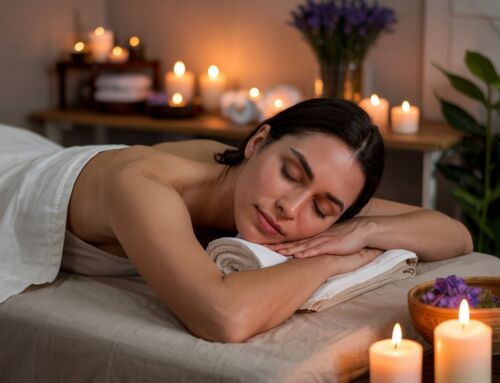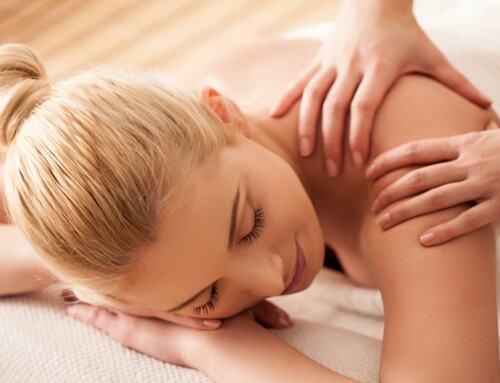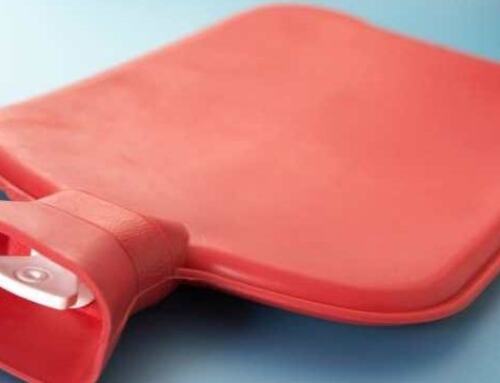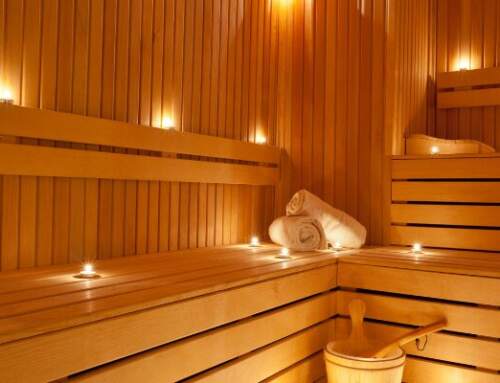You may first feel it when bending down to pick something up, or you may experience it as early morning tightness that you really feel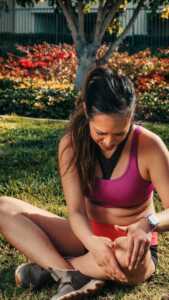 when you first get out of bed. But whenever it strikes, your knee pain will undoubtedly grab your attention. The good news regarding knee pain is that it responds well to self-care measures.
when you first get out of bed. But whenever it strikes, your knee pain will undoubtedly grab your attention. The good news regarding knee pain is that it responds well to self-care measures.
There are a number of elements that can place you at risk for knee pain.
Higher Weight: If you weigh more than you should, you put more stress and pressure on your knee joints. In time, this excess stress can cause discomfort.
Overuse: An inflammatory reaction can happen when a repeated activity causes a muscle to fatigue. This inflammatory action can damage bordering tissue. It can be further intensified when you don’t give the knee sufficient time to totally recoup, thereby making it vulnerable to re-injury.
Absence of muscle stamina: Professionals site lack of stamina and flexibility as the leading cause of knee injury. Weak or limited muscles offer less support for the knee joint.
Mechanical issues: Having misaligned knees, one leg that is much shorter than the other, or other architectural abnormalities can add to knee discomfort.
Previous injury: If you have previously injured your knee chances rise that you will hurt it again. Potentially due to the fact that the knee was not offered sufficient time to heal effectively or because it does not go back to the condition it was in prior to the injury.
Age: Some knee-related problems impact youngsters more than mature ones, such as Osgood-Schlatter disease or patellar tendonitis. Other conditions, such as gout and osteoarthritis, tend to affect older people. An injury to the knee can impact any one of the tendons, ligaments, or bursa (fluid-filled sacs in the joint).
 What conditions can exercise help?
What conditions can exercise help?
– Bursitis – An inflammation that comes from stress on the knee. The stress may be from repeated overuse, kneeling for extended periods of time, or other injuries.
– Tendonitis – Discomfort that occurs in the front of the knee. It usually worsens when stairs fluctuate. This is a usual injury for skiers, runners as well as cyclists.
– Torn ligaments or cartilage material – This injury can cause severe discomfort and a lack of stability of the knee joint.
– Strain or Sprain – A small injury to the ligaments brought on by unexpected or unnatural twisting.
– Hip problems – This may trigger you to really feel pain in the knee area.
– Osteoarthritis – a condition influencing the joints characterized by discomfort, stiffness, and swelling.
– Gout arthritis – A metabolic condition caused by a buildup of uric acid in the joints.
Self Care Treatments
As stated above, knee pain reacts well to self-treatment. Some of the things that you can do if you experience this pain are: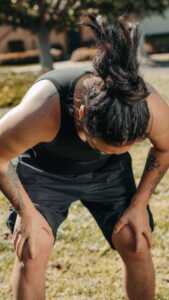
– Use ice for 15 mins at once, initially and after that, about 4 times a day until the pain subsides.
– Rest and avoid the tasks that add to the preliminary injury.
– Elevate your leg to lower the swelling.
– Over-the-counter medicines can provide pain relief, but they can also have unwanted side effects.
– Sleep with a pillow underneath the problematic knee.
– Mild compression, such as with an Ace bandage, may relieve swelling.
It is not always possible to prevent knee pain, but there are some things that you can do to lessen the chance of having problems.
– Lose excess weight. Maintaining a healthy weight will keep your knees from having to support more than they were designed to.
Stay flexible. Weak muscular tissues make you much more vulnerable to knee injuries. So, do stretching workouts daily to stay limber.
Workout intelligently. Don’t exercise when you have pain, or you’re tired. If you have chronic injuries, consider changing to sports or exercises that place less stress on your joints, such as swimming rather than basketball.
Get properly fitted shoes. When shoes fit poorly, we may feel it up in the knees and hips, causing them to be misaligned and susceptible to injury.
Appropriate supplements: Supplements can help the body keep the ligaments and joints oiled and rebuild cartilage.
Like Phosoplex ™ is a recommended supplement for osteoarthritis and joint discomfort. It is an effective, 100% natural, and safe solution for joint lubrication, pain alleviation, and restoring healthy cartilage material. If you stick to the above tips, you will certainly go a long way toward knocking out knee pain before it begins.
Knee Pain Workout
If you have knee pain, specific knee exercises can help ease the pain and improve mobility. Here is how to fix sore knees from exercise:
Stretching Exercises
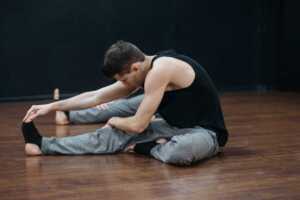
This is an alternative way to stretch the hamstrings.
1. Hamstring stretch. Stretching the muscles that run along the back of the thigh can help to relieve tension and strain on the knee joint. Prop your right foot up on a chair and with your upper body tall lean forward over your right leg to stretch the back of the leg. Repeat with the left leg. Keep the legs straight while performing this exercise.
2. Quadriceps stretch. These stretches target the muscles in the front of the thigh. They can help to improve the range of motion and reduce pain in the knee joint. Slowly bend your leg to bring your heel toward your glutes. Hold onto your ankle. You will feel the stretch down the front of your leg. Repeat on the other leg.
3 Heel and Calf Stretches. This is an exercise for back knee pain. This will stretch your lower posterior leg. The muscles that attach to the back of the knee. With your palms against a wall keep your right foot near the wall and lunge your left leg back. You can keep your leg bent if you’d like or straighten it. Keep your hips forward to feel the stretch in the back of the leg. Repeat on the right leg.
Strengthening Exercises
1 Straight leg raise. This exercise strengthens the quadriceps muscles and can help take pressure off the knee joint. Laying face up on the floor. Bend your right knee up with your foot on the floor while keeping your left leg straight. Raise your left leg about 45 degrees. Slowly lower your leg to the floor. Repeat on the right leg. Perform 3 sets of 10-15 on each leg.
2 Leg curls. This exercise targets the hamstring muscles and can help to reduce pain and improve mobility. Laying on your stomach, bend one knee to bring your heel to your glute. Repeat on the other leg. Perform 3 sets of 10-15 on each leg
3 Wall squats. This exercise strengthens the quadricep and glute muscles and can help to improve the range of motion and reduce pain.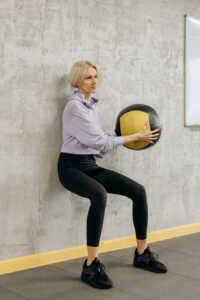 With your back against the wall lower into a sitting position or as low as you can go without going past parallel. Hold this position for as long as possible.
With your back against the wall lower into a sitting position or as low as you can go without going past parallel. Hold this position for as long as possible.
4 Calf Raises. This exercise strengthens the gastrocnemius and soleus muscles, which are the calf muscles. Holding onto something for balance, with your feet shoulder-width apart, raise your toes and lower. Repeat as many times as possible. Perform three sets.
5 Leg Extension. This exercise strengthens the quadriceps muscles, which provide support around the knee. Sitting in a chair, lift your right leg until it is parallel to the floor. Repeat on the left leg. Repeat three sets of 10 on each leg.
6 Side Leg Raises. This exercise will strengthen the abductor muscles, which help you stand, walk, and rotate your leg. Strengthening them will help prevent further pain. Lie down on your side with your legs stacked on top of each other. With your leg straight, lift your top leg toward the ceiling. Slowly lower back to the starting position. Repeat on the other leg. Perform 3 sets of 10-15 on each leg.
7 Prone Leg Raises. This exercise will strengthen the glutes, which are imperative to strong knees. Lay on your stomach. With your legs straight, slowly lift your right leg up toward the ceiling, flexing the glute muscle. Do this as many times as possible. Repeat on the right leg. Perform three sets.
If you have knee pain, it is important to consult with a doctor or physical therapist before beginning any exercise program. They can help design a program specifically tailored to your needs.
We can help at Body Ache Escape Massage Center with soreness by loosening the tight and restricted muscles around the knee! Call us to schedule a massage today or you can schedule online!


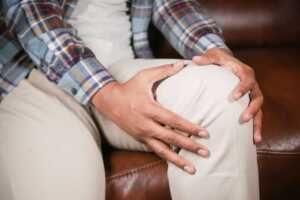 What conditions can exercise help?
What conditions can exercise help?